Best Books on Go Programming to Buy in December 2025
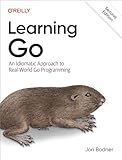
Learning Go: An Idiomatic Approach to Real-World Go Programming


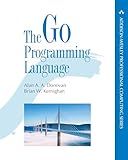
Go Programming Language, The (Addison-Wesley Professional Computing Series)



100 Go Mistakes and How to Avoid Them


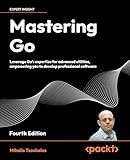
Mastering Go: Leverage Go's expertise for advanced utilities, empowering you to develop professional software


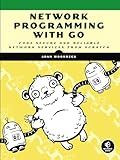
Network Programming with Go: Code Secure and Reliable Network Services from Scratch


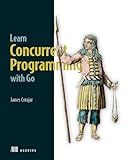
Learn Concurrent Programming with Go


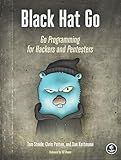
Black Hat Go: Go Programming For Hackers and Pentesters
- MASTER GO PROGRAMMING FOR ETHICAL HACKING AND SECURITY TESTING.
- COMPREHENSIVE GUIDE TAILORED FOR HACKERS AND PENTESTERS.
- DURABLE PAPERBACK FORMAT FOR EASY READING AND NOTE-TAKING.


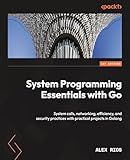
System Programming Essentials with Go: System calls, networking, efficiency, and security practices with practical projects in Golang


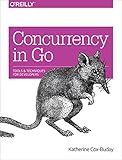
Concurrency in Go: Tools and Techniques for Developers


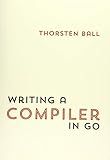
Writing A Compiler In Go


To initialize a nested array of structs in Go, you need to follow the syntax and correct initialization pattern. Here's how you can do it:
- Define the struct type: First, you need to define the struct type that will be used to create the nested array. For example, let's say you have a struct called Person with two fields Name and Age:
type Person struct { Name string Age int }
- Declare the nested array: Create a variable with the desired array structure. For example, let's create a 2-dimensional array of Person structs:
var nestedArray [][]Person
- Initialize the nested array: To initialize the nested array, you need to allocate memory for each dimension and populate the struct fields accordingly. Here's an example of initializing a 2-dimensional array with two Person structs:
nestedArray = make([][]Person, 2) nestedArray[0] = []Person{{Name: "Alice", Age: 25}, {Name: "Bob", Age: 30}} nestedArray[1] = []Person{{Name: "Charlie", Age: 35}, {Name: "David", Age: 40}}
In the above example, a 2-dimensional array with two rows is created, and each row contains two Person structs. The make function is used to allocate memory for the outer dimension of the array, and each inner dimension is initialized with the appropriate Person structs.
- Accessing the nested array: You can access the elements of the nested array using array indexing. For example, to access the Age field of the second Person in the first row:
age := nestedArray[0][1].Age
You can follow a similar pattern to initialize and work with multi-dimensional arrays of structs with any necessary depth.
Remember to import the relevant packages if necessary and ensure all types and variables are properly declared.
How to create a jagged nested array of structs in Go?
To create a jagged nested array of structs in Go, you can make use of slices and structs. Here's an example:
package main
import "fmt"
type Person struct { Name string Age int }
func main() { // Create a jagged nested array of structs jaggedArray := make([][]Person, 3)
// Initialize each nested slice with different lengths
jaggedArray\[0\] = make(\[\]Person, 2)
jaggedArray\[1\] = make(\[\]Person, 3)
jaggedArray\[2\] = make(\[\]Person, 1)
// Assign values to the structs
jaggedArray\[0\]\[0\] = Person{Name: "John", Age: 25}
jaggedArray\[0\]\[1\] = Person{Name: "Jane", Age: 30}
jaggedArray\[1\]\[0\] = Person{Name: "Alice", Age: 20}
jaggedArray\[1\]\[1\] = Person{Name: "Bob", Age: 35}
jaggedArray\[1\]\[2\] = Person{Name: "Charlie", Age: 40}
jaggedArray\[2\]\[0\] = Person{Name: "Eve", Age: 45}
// Print the jagged nested array
for i := 0; i < len(jaggedArray); i++ {
for j := 0; j < len(jaggedArray\[i\]); j++ {
fmt.Printf("Name: %s, Age: %d\\n", jaggedArray\[i\]\[j\].Name, jaggedArray\[i\]\[j\].Age)
}
fmt.Println()
}
}
In this example, we create a jagged nested array jaggedArray with 3 nested slices. Each nested slice has a different length. We then assign values to each element of the array by creating Person structs and assigning them to the corresponding positions.
Finally, we traverse the jagged nested array and print the values of each struct.
The output of the above code will be:
Name: John, Age: 25 Name: Jane, Age: 30
Name: Alice, Age: 20 Name: Bob, Age: 35 Name: Charlie, Age: 40
Name: Eve, Age: 45
Please note that a jagged nested array is simply a slice of slices, and each element of the inner slice can be any type, including structs.
How to iterate over a nested array of structs in Go?
To iterate over a nested array of structs in Go, you can use nested for loops. Here's an example:
package main
import ( "fmt" )
type Person struct { Name string Age int Country string }
func main() { people := [][]Person{ { {Name: "John", Age: 25, Country: "USA"}, {Name: "Jane", Age: 30, Country: "USA"}, }, { {Name: "Alice", Age: 35, Country: "UK"}, {Name: "Bob", Age: 40, Country: "UK"}, }, }
for \_, innerArray := range people {
for \_, person := range innerArray {
fmt.Printf("Name: %s, Age: %d, Country: %s\\n", person.Name, person.Age, person.Country)
}
}
}
In this example, we have a nested array people which contains arrays of Person structs. The outer loop iterates over each inner array, and the inner loop iterates over each Person struct within the current inner array.
Inside the inner loop, you can access the fields of each Person struct and perform any desired operations on them. In this case, we are simply printing the values to the console.
What is the impact of using a deep copy versus a shallow copy for a nested array of structs in Go?
The impact of using a deep copy versus a shallow copy for a nested array of structs in Go can have significant differences in terms of memory usage and behavior.
- Shallow Copy: A shallow copy creates a new slice, but the underlying elements are still references to the original struct instances. Changes made to the original struct instances will be reflected in both the original and copied slice. However, modifying the slice itself (e.g., adding or removing elements) will not affect the original slice. Shallow copying is relatively fast and uses less memory initially since it doesn't duplicate the actual structs. It can lead to unexpected behavior if the original and copied slices are modified independently and unintended side effects are introduced.
- Deep Copy: A deep copy creates a new slice and also duplicates the underlying struct instances. Changes made to the original struct instances will not be reflected in the copied slice, and vice versa. Modifying the slice itself will not affect the original slice, similar to a shallow copy. Deep copying can be slower and more memory-intensive, especially for large nested arrays, as it duplicates all the structs. It ensures that modifications to the copied slice or struct won't impact the original data, avoiding unintended side effects.
Considering these differences, the choice between deep copy and shallow copy depends on the specific requirements of your application. If you need modifications to the original data to be independent of the copied data, a deep copy is necessary. However, if you don't require independent modifications and want to save memory, a shallow copy might be sufficient.
What is the significance of using a nested array of structs in a concurrent Go program?
Using a nested array of structs in a concurrent Go program can have several advantages and significance:
- Data organization: The nested structure allows for a more organized representation of data. When dealing with complex data structures, using nested arrays of structs can help in better categorization and management of information.
- Synchronization: In concurrent programming, synchronization is crucial to prevent race conditions and ensure proper handling of shared data. Using a nested array of structs can provide a natural way to divide and parallelize tasks, allowing for concurrent access and manipulation of different parts of the data structure.
- Parallel processing: The nested array of structs can be effectively utilized to divide the workload among multiple goroutines. By partitioning the data into smaller chunks, each goroutine can independently process a portion of the data, leading to better utilization of available resources and potentially improved performance.
- Efficient access: Nested arrays of structs can facilitate efficient and fast access to specific data elements. With proper indexing and struct design, accessing individual elements within the nested structure can be done in constant time, optimizing the performance of concurrent operations.
- Maintainability: Structuring data in a nested array can also enhance code maintainability. The code becomes more self-explanatory and easier to understand, especially when multiple developers are working on the same project.
Overall, using a nested array of structs in a concurrent Go program allows for better organization, synchronization, parallel processing, efficient access, and code maintainability, leading to improved performance and clarity in the codebase.
What is the recommended way to perform filtering on a nested array of structs in Go?
In Go, performing filtering on a nested array of structs involves iterating over the array and applying a filtering condition to each element. Here are the recommended steps to perform this task:
- Define the struct that represents the nested data. For example:
type Person struct { Name string Age int Address Address }
type Address struct { Street string City string Country string }
- Create an array of the defined struct. For example:
people := []Person{ {Name: "John Doe", Age: 30, Address: Address{Street: "123 Main St", City: "New York", Country: "USA"}}, {Name: "Jane Smith", Age: 25, Address: Address{Street: "456 Elm St", City: "London", Country: "UK"}}, ... }
- Define a filtering condition or a predicate function that returns a boolean indicating whether an element satisfies the condition. For example, filtering people who live in the USA:
func livesInUSA(person Person) bool { return person.Address.Country == "USA" }
- Create a new slice to store the filtered results:
var filteredPeople []Person
- Iterate over the people array, applying the filtering condition, and appending the matching elements to the filtered results:
for _, person := range people { if livesInUSA(person) { filteredPeople = append(filteredPeople, person) } }
After these steps, you will have the filtered results stored in the filteredPeople slice. You can modify the filtering condition or the struct according to your specific requirements.
How to access elements in a nested array of structs in Go?
To access elements in a nested array of structs in Go, you need to iterate over the array and then access the fields of each struct. Here is an example code snippet that demonstrates how to do it:
package main
import "fmt"
type Person struct { Name string Age int Location string }
func main() { // Create a nested array of structs people := [][]Person{ { {"John", 25, "New York"}, {"Alice", 30, "London"}, }, { {"Bob", 35, "Paris"}, {"Lisa", 40, "Berlin"}, }, }
// Iterate over the array
for i := 0; i < len(people); i++ {
for j := 0; j < len(people\[i\]); j++ {
// Access the fields of each struct
fmt.Println("Name:", people\[i\]\[j\].Name)
fmt.Println("Age:", people\[i\]\[j\].Age)
fmt.Println("Location:", people\[i\]\[j\].Location)
fmt.Println()
}
}
}
Output:
Name: John Age: 25 Location: New York
Name: Alice Age: 30 Location: London
Name: Bob Age: 35 Location: Paris
Name: Lisa Age: 40 Location: Berlin
In this example, we have a nested array people where each element is an array of Person structs. By using nested loops, we can iterate over each struct and access its fields using dot notation.
What are nested arrays of structs in Go?
In Go, nested arrays of structs refers to the concept of having an array that contains elements of another array, where each element is a struct.
For example, consider the following code snippet:
type Person struct { name string age int }
func main() { family := [2][2]Person{ { {"John", 40}, {"Jane", 38}, }, { {"Tom", 15}, {"Lisa", 12}, }, }
fmt.Println(family\[0\]\[0\].name) // Output: John
fmt.Println(family\[1\]\[1\].age) // Output: 12
}
In this example, we have a struct Person that contains two fields: name of type string and age of type int. The family variable is defined as a nested array of structs. It is a 2-dimensional array with a size of 2x2, where each element is a Person struct. We can access and manipulate the elements of the nested array using indexing (family[0][0] refers to the first element of the first array, which is a Person struct).
Nested arrays of structs provide a way to store and organize structured data in a multidimensional array format.
How to remove elements from a nested array of structs in Go?
To remove elements from a nested array of structs in Go, you can use the built-in append function along with a combination of loop statements. Here is an example code snippet that demonstrates how you can achieve this:
package main
import "fmt"
type Person struct { Name string Age int }
func main() { // Declare a nested array of structs people := [][]Person{ { {Name: "John", Age: 25}, {Name: "Jane", Age: 32}, }, { {Name: "Alice", Age: 42}, {Name: "Bob", Age: 23}, {Name: "Eve", Age: 31}, }, }
// Remove elements where Age is less than 30
for i := 0; i < len(people); i++ {
// Create a new slice to store the filtered elements
var filtered \[\]Person
for j := 0; j < len(people\[i\]); j++ {
if people\[i\]\[j\].Age >= 30 {
// Add the struct to the filtered slice
filtered = append(filtered, people\[i\]\[j\])
}
}
// Replace the original nested array with the filtered slice
people\[i\] = filtered
}
fmt.Println(people)
}
In this example, we have a nested array of Person structs called people. We want to remove elements from this nested array where the Age field is less than 30.
To achieve this, we iterate over each element of the nested array using two nested loops. Inside the inner loop, we check if the Age is greater than or equal to 30. If it is, we append the struct to a new slice called filtered. After iterating through all the elements, we replace the original nested array with the filtered slice.
Finally, we print the modified people nested array to verify that the elements with an age less than 30 have been removed.
How to convert a nested array of structs to JSON in Go?
To convert a nested array of structs to JSON in Go, you can use the json.Marshal function provided by the encoding/json package. Here's an example that demonstrates the conversion:
package main
import ( "encoding/json" "fmt" )
type Person struct { Name string `json:"name"` Age int `json:"age"` }
func main() { // Define a nested array of structs people := []Person{ {Name: "Alice", Age: 25}, {Name: "Bob", Age: 30}, {Name: "Charlie", Age: 35}, }
// Convert the nested array to JSON
jsonData, err := json.Marshal(people)
if err != nil {
fmt.Println("Error marshaling JSON:", err)
return
}
// Print the JSON data
fmt.Println(string(jsonData))
}
In this example, the Person struct represents an individual person with a name and an age. The json:"name" and json:"age" tags define the field names in the JSON output.
The json.Marshal function is used to convert the nested array of Person structs to JSON. If there is an error during the marshaling process, the error is handled accordingly.
Finally, the JSON data is printed by converting it to a string using string() function.
Running this program will output the following JSON:
[{"name":"Alice","age":25},{"name":"Bob","age":30},{"name":"Charlie","age":35}]
